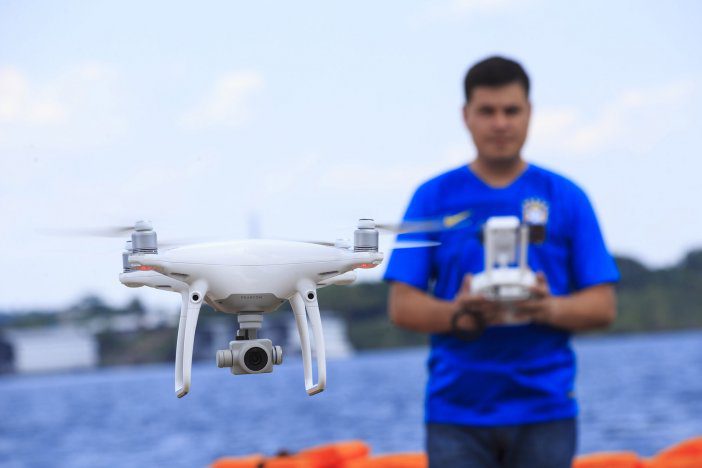The year 2022 registered about 310 thousand unmanned operations
Captain Esp Eduardo Silva (DECEA) and Captain Alcoforado
The Department of Airspace Control (DECEA) has released the quantitative number of drone flights by area of jurisdiction of the regional bodies since 2016, the year in which the System for Requesting Access to Brazilian Airspace by Unmanned Aircraft (SARPAS – Sistema para Solicitação de Acesso ao Espaço Aéreo Brasileiro por Aeronaves Não Tripuladas) was created.
DECEA’s regional bodies, responsible for each area and its respective airspace, are divided between Integrated Air Defense and Air Traffic Control Centers (CINDACTA I, II, III and IV) and the Southeast Regional Airspace Control Center (CRCEA-SE).
Statistical data show these numbers and the differences between the regions in terms of flights. The Southeast region, for example, even though it is the smallest in land area, concentrated approximately 290 thousand operations. On the other hand, the North region had the lowest index, adding up to about 52 thousand flights.

The year 2022 was the one with the highest demand, adding up to more than 310,000 unmanned operations, which shows the accelerated development of this new air modal.
For the Chief of the Coordination and Control Division (DCCO) of DECEA’s Operations Subdepartment (SDOP), Lieutenant Colonel Bruno Michel Marcondes Alves, the disclosure of actions related to current operations is much more than a simple task, it is a commitment. “It is not just about regulating an air activity, but, above all, sharing with society the actions taken. When we talk about safety, we have to keep in mind that the first step is awareness. To achieve new results, it is necessary to disseminate good practices in order to receive feedback, questions and suggestions from the users. In this way, everyone participates in the process,” he said.

Recently, DECEA published the Aeronautical Command Directive (DCA) 351-6, aiming to disseminate the Operational Conception about the Unmanned Traffic Management (UTM) and to guide the initial actions for its implementation in Brazil. The Guideline can be accessed by clicking here.
For questions and suggestions, the Department has a direct channel available to users, through the Citizen Service Center [Link].
Photos: Fábio Maciel / DECEA *** Translated by the DEFCONPress FYI Team ***
